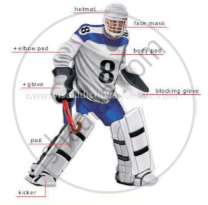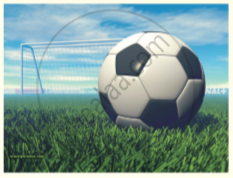Advertisements
Advertisements
Question
In the story, Patrick does difficult things he hates to do because the elf pretends he needs help. Have you ever done something difficult or frightening, by pretending about it in some way? Tell your classmates about it.
Solution
Do it yourself
APPEARS IN
RELATED QUESTIONS
Think about the Text
Discuss in pairs and answer question below in a short paragraph (30 − 40 words).
“I looked into the mirror and smiled,” says the doctor. A little later he says, “I forgot my danger and smiled feebly at myself.” What is the doctor’s opinion about himself when:
(i) he first smiles, and
(ii) he smiles again? In what way do his thoughts change in between, and why?
Thinking about the poem
Where does the traveller find himself? What problem does he face?
Is it possible to make accurate guesses about the people you have never met? Read the poem, to see how conclusions can be drawn about people.
Abandoned Farmhouse
He was a big man, says the size of his shoes On a pile of broken dishes by the house; A tall man too, says the length of the bed In an upstairs room; and a good, God-fearing man, Says the Bible with a broken back On the floor below a window, bright with sun; But not a man for farming, say the fields Cluttered with boulders and a leaky barn.
A woman lived with him, says the bedroom wall Papered with lilacs and the kitchen shelves Covered with oilcloth, and they had a child Says the sandbox made from a tractor tyre. Money was scarce, say the jars of plum preserves And canned tomatoes sealed in the cellar-hole, And the winters cold, say the rags in the window frames. It was lonely here, says the narrow country road.
Something went wrong, says the empty house In the weed-choked yard. Stones in the fields Say he was not a farmer; the still-sealed jars In the cellar say she left in a nervous haste. And the child? Its toys are strewn in the yard Like branches after a storm - a rubber cow, a rusty tractor and a broken plow, a doll in overalls. Something went wrong, they say. Ted Kooser
Form pairs - one student will read the text for 'Hockey', and the second student will read the text for 'Football'.
Hockey

The game starts when the umpire blows his whistle for the opening pass-back. The passback is made at the centre of the field to start the game (also after half- time and after each goal is scored). The ball, which may be pushed or hit, must not be directed over the centre line. All players of the opposing team must stand at least 5 yard from the ball and all players of both teams, other than the player making the pass-back must be in their own half of the field.
There are two umpires to control the game and to administer the rules. These umpires are the sole judges of the game. The umpires are responsible for keeping time for the duration of the game.


In front of each goal is an area known as the penalty area. This is a rectangular area, 40.2m wide and extending 16. Sm into the field where the goalkeeper operates.
A standard adult football match consists of two periods of 45 minutes each, known as halves. Each half runs continuously, meaning that the clock is not stopped when the ball is out of play. There is usually a 15-minute half-time break between halves. The end of the match is known as full-time. Anytime during the match, a team can substitute upto three players maximum.
The game is controlled by a referee who is the official timekeeper for the match, and may make an allowance for time lost through substitutions, injured players requiring attention, or other stoppages. There are also two linesmen who keep guard of the touchlines or sidelines, signalling when the ball crosses the boundary lines. The referee alone signals the end of the match.
Handling the ball deliberately, pushing or tripping an opponent, or hitting a player from behind are examples of fouls, punishable by a direct free kick or penalty kick depending on where the offence occurred. Other fouls are punishable by an indirect free kick.
The referee may punish a player's or substitute's misconduct by a caution (yellow card) or sending-off (red card). A player is given a yellow card is said to have been 'booked'.
• Red - Serious misconduct resulting in ejection from the game. If a player has been sent off, no substitute can be brought in his place.
Oh yes, we know it keeps them still,
They don't climb out the window sill,
They never fight or kick or punch,
They leave you free to cook the lunch
And wash the dishes in the sink....
But did you ever stop to think,
To wonder just exactly what
This does to your beloved tot?
IT ROTS THE SENSE IN THE HEAD!
IT KILLS IMAGINATION DEAD!
IT CLOGS AND CLUTTERS UP THE MIND!
IT MAKES A CHILD SO DULL AND BLIND
HE CAN NO LONGER UNDERSTAND
A FANTASY, A FAIRYLAND!
HIS BRAIN BECOMES AS SOFT AS CHEESE!
HIS POWERS OF THINKING RUST AND FREEZE!
HE CANNOT THINK - HE ONLY SEES!
Read the lines given above and answer the question given below.
Explain with reference to context.
For oft, when on my couch I lie
In vacant or in pensive mood,
They flash upon that inward eye
Which is the bliss of solitude;
And then my heart with pleasure fills,
And dances with the daffodils.
Read the lines given above and answer the question that follow.
Explain with reference to context.
The athletes had come from all over the country
To run for the gold, for the silver and bronze
Many weeks and months of training
All coming down to these games.
The spectators gathered around the old field
To cheer on all the young women and men
The final event of the day was approaching
Excitement grew high to begin.
Read the lines given above and answer the following question:
What event is being referred to?
It was the summer of 1936. The Olympic Games were being held in Berlin. Because Adolf Hitler childishly insisted that his performers were members of a “master race,” nationalistic feelings were at an all-time high.
I wasn’t too worried about all this. I’d trained, sweated and disciplined myself for six years, with the Games in mind. While I was going over on the boat, all I could think about was taking home one or two of those gold medals. I had my eyes especially on the running broad jump. A year before, as a sophomore at the Ohio State, I’d set the world’s record of 26 feet 8 1/4 inches. Nearly everyone expected me to win this event.
Read the extract given below and answer the question that follow.
Who is Jesse Owens?
Read the extract given below and answer the questions that follow:
Baldeo, the watchman, was awake. He stretched himself, slowly unwinding the heavy shawl that covered him like a shroud. It was close on midnight and the chill air made him shiver. The station, a small shack backed by heavy jungle, was a station in name only; for trains only stopped there, if at all, for a few seconds before entering the deep cutting that led to the tunnel. Most trains only slowed down before taking the sharp curve before the cutting.
(i) What were Baldeo’s duties as a watchman? What question did his son ask him before he left for his nightly errand?
(ii) Describe the axe that Baldeo carried with him. Who had made the axe?
(iii) Which sound made Baldeo realize that the tiger was close by?
Why was he worried that the tiger may be going in the opposite direction? Why didn’t the tiger fear the man?
(iv) Give an account of the encounter between Baldeo and the tiger.
(v) How did the tiger die? Point out a similarity in the characters of Baldeo and his son Tembu. Give an example for each to justify your answer.
Read the extract given below and answer the questions that follow:
"What's your name ?" he asked.
"Bmillnvaite," I replied, "Ricardo Bmithwaite.
'"I'm Pinkus and this is Mama Pinkus."
The introduction was effected with a filial devoti~ which was good to see.
"How d'you do, Mama Pinkus."
"I think I know someplace for you." He went the little noticeboard and removed a small car, on which was written a short advertisement of, room to let near-by.
(i) Why was Braithwaite looking for a new placet? stay? Why was he impressed by the place that was on rent?
(ii) What reception did Ile get wizen he reached the address that had been advertised? Whom did tit house belong to?
(iii) Why did Mrs. Pegg come lo see Braithwaite? Wh• reply did Braithwaite give to her?
(iv) What changes occurred in Pamela's persona/ii after the August holiday?
(v) What comment did Potter make wizen Braithwait? hurt himself? What did he mean by that comment How did Pamela react to Potter's remark?
Read the extract given below and answer the questions that follow :
The breaking down of discipline likewise affected the dogs in their relations with one another. They quarreled and bickered more than ever among themselves, till at times the camp was a howling bedlam: 'Dave and Sol-leks alone were unaltered, though they were made irritable by the unending squabbling.
(i) What led to the break-down of discipline in the dog team?
How did it affect the relationship in the dogs?
(ii) What other acts of indiscipline did Buck's encouragement lead to?
(iii) What started the dogs off on a chase after supper one night at the mouth of the river Tahkeena?
(iv) Who led the dogs in the chase? What primitive urge did Buck experience during the chase?
(v) How did Spitz use the chase to try and outwit Buck? What does this reveal of Spitz's nature?
Answer the following question.
Finding good twigs for Kari took a long time. Why?
Tilloo pressed the red button and “the damage was done”. What was the damage?
Complete the following sentence by adding the appropriate part of the sentence given below.
Many wise men answered the king’s questions, _______________.
What did Gopal’s wife think about him?
Describe the change the cherry tree underwent after the kind old poured a pinch of ash over it.
The cook loved the bear like her own son. Justify.
What surprises do the meadows have to offer you?
How did the old aunt get justice?
Why were the hinges of the door rusty?
